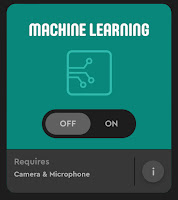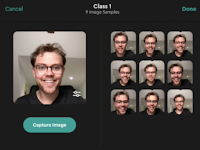 |
| Machine Learning Extension |
LEGO MINDSTORMS announced today a brand new feature that is sure to excite all users. Machine Learning Extension is coming to the software in August 2022. This will allow users to implement new applications that were not possible before. Machine Learning has become exceedingly popular in recent years with applications in all sorts of industries from robotics to financial services to climate change. Now, even the youngest of robot enthusiasts and programmers have access to the world of Machine Learning and Artificial Intelligence.
 |
| Comparing two classes |
Machine Learning on MINDSTORMS will work with both images and audio. For instance, you could train your model to recognize smiles and frowns on your face and have the emotion displayed on your hub. You could train your model to recognize when a red ball is present or not or identify a particular LEGO element. You can control your robot with audio commands that use your own voice. It is exciting to see what new possibilities the Machine Learning Extension in MINDSTORMS opens up.
Up to six classes can be trained at one time and a minimum of two are needed for the model to work. It is very easy to set up these classes and collect samples. All the steps, including the training, are conducted within the App. Visual probability bars allow the user to see exactly what is going on and determine if they need to make changes.
 |
| Using Machine Learning to Identify Sad and Happy Faces |
 |
| Adding Samples |
Dan Meehan, Creative Design Lead said, "Being able to quickly create a Machine Learning model that makes their robot behave differently when it detects their face, or their friends, gives them the confidence to explore, understand and use machine learning in the real world. And if things don't work, they're quick to understand that maybe the model needs re-training with more samples, or they need to reposition the camera to get a better view."
By adding Machine Learning to MINDSTORMS, you can now build even smarter robots and continue your "Learning through Play" journey.



